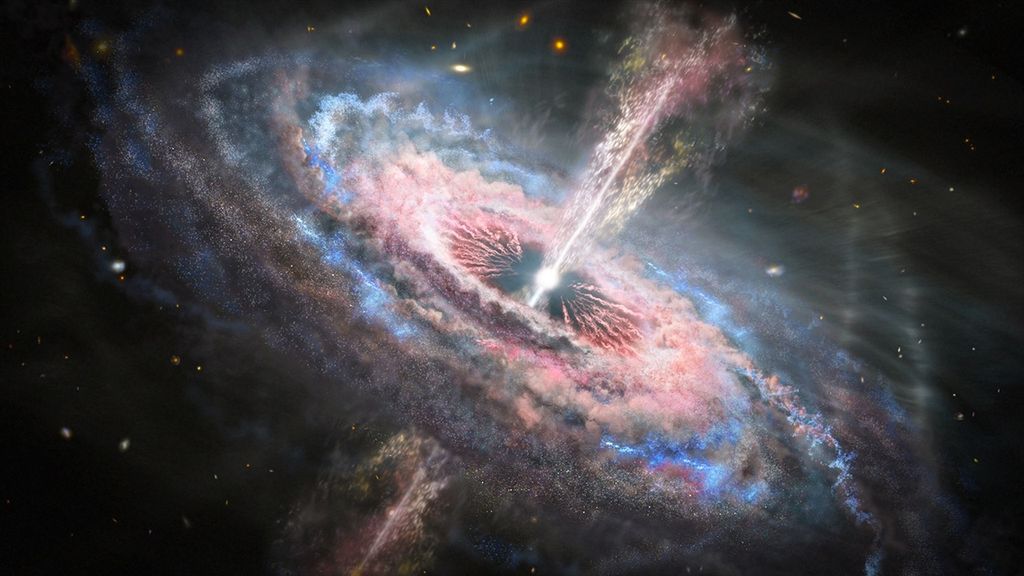Distant 'quasar tsunamis' are ripping their own galaxies apart
By Brandon Specktor - Senior Writer a day ago
The most energetic objects in the universe may be stopping the biggest galaxies from growing bigger.

An illustration of a quasar blasting a jet of hot, radioactive wind into the cosmos.
(Image: © NASA, ESA and J. Olmsted (STScI))
At the center of almost every galaxy in the universe is a supermassive black hole gobbling up incredible amounts of matter, and belching out incredible amounts of radiation. The biggest and hungriest of these gobblers — called quasars (or quasi-stellar objects, because they look deceptively like stars when seen through most telescopes) — are some of the most energetic objects in the universe.
As infalling matter swirls around the quasar's maw at near-light-speed, that matter heats up and flies outward, propelled by the incredible force of its own radiation. All that intergalactic indigestion makes a quasar an awesome sight, capable of shining a thousand times brighter than a galaxy of 100 billion stars. However, a series of new papers suggests, the very same radiation that puts quasars on our maps of the universe may be devastating the galaxies that host the insatiable objects.
In six studies published March 16 in a special edition of The Astrophysical Journal supplemental series, astronomers used NASA's Hubble Space Telescope to spy on 13 quasar outflows — that is, gusts of high-speed radiation pouring out of distant quasars. By observing the outflows over several years and in many wavelengths across the electromagnetic spectrum, the team found that the wind and gas gushing out of a quasar can travel at more than 40 million mph (64 million km/h) and reach billions of degrees in temperature.
One outflow the team studied accelerated from nearly 43 million mph (69 million km/h) to roughly 46 million mph (74 million km/h) over a three-year period — the fastest-accelerating wind ever detected in space.
More:
https://www.livescience.com/quasar-tsunamis-kill-star-formation.html
